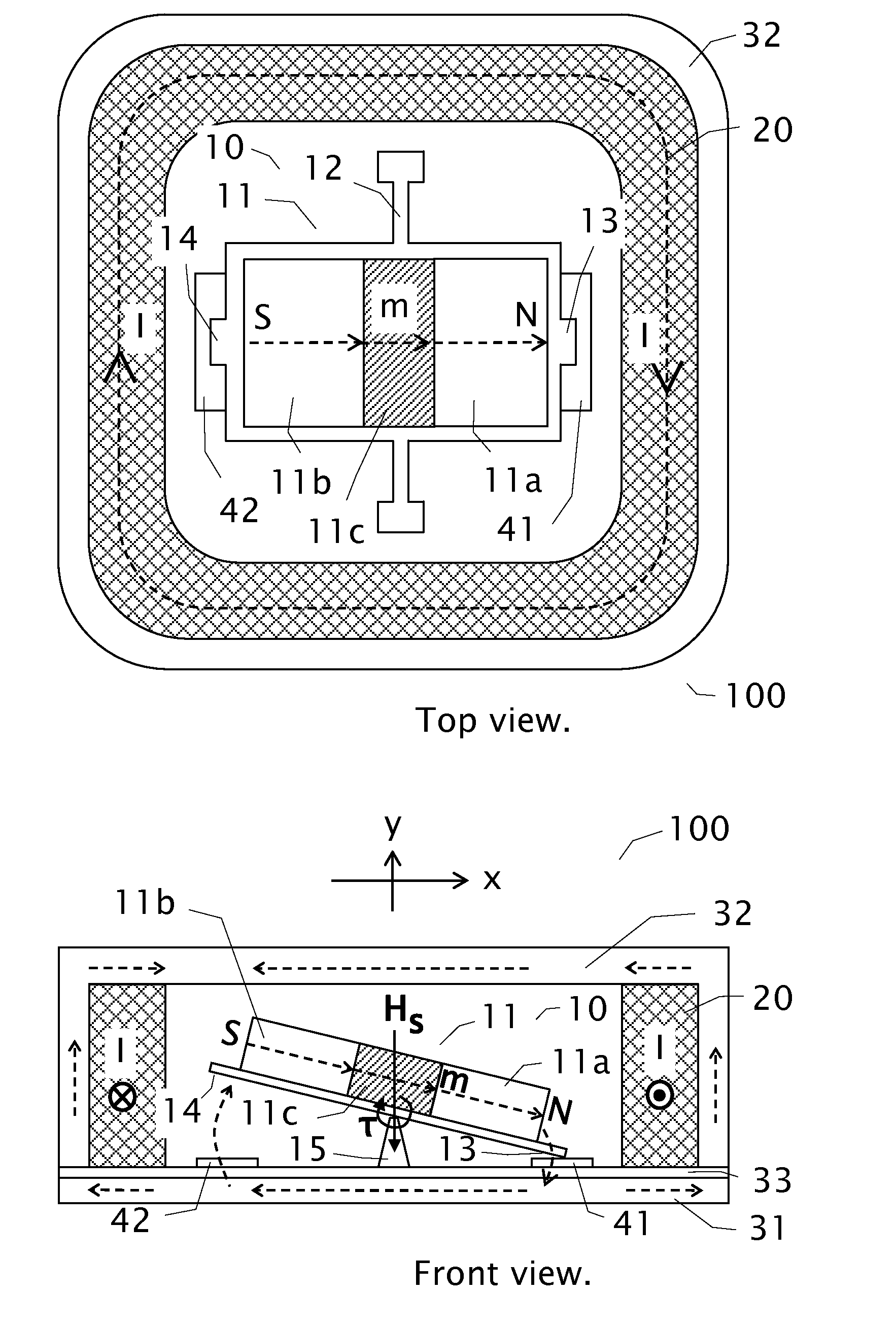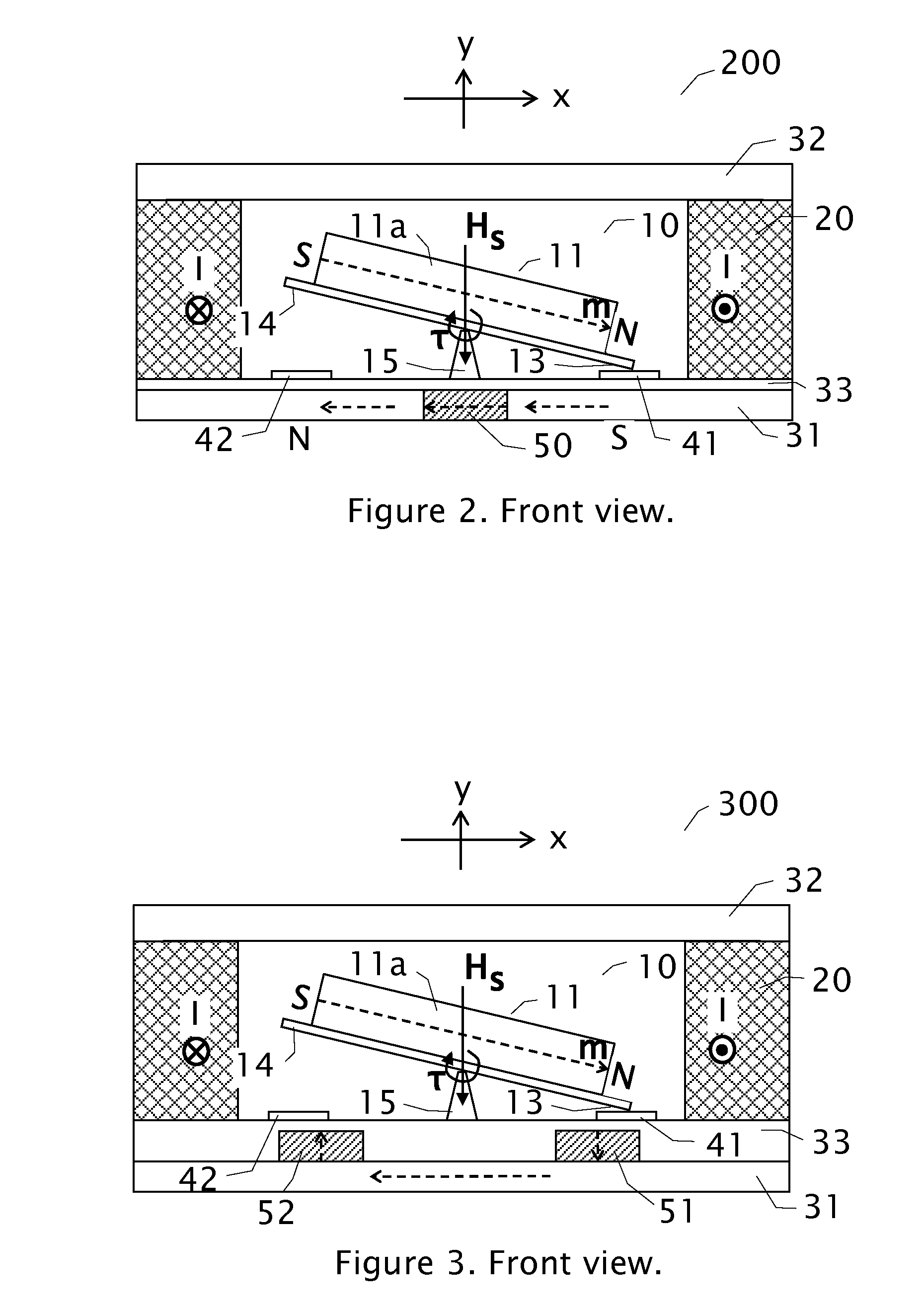Electromechanical relay and method of operating same
a technology of electromechanical relays and relays, applied in the field of relays, can solve the problems of large coil size, high unit-to-unit variability and high unit cost, and the general structure of the assembly-line type process is generally relatively complicated, and can be manufactured by using conventional winding methods. or very difficult,
- Summary
- Abstract
- Description
- Claims
- Application Information
AI Technical Summary
Problems solved by technology
Method used
Image
Examples
example 1
[0030]Assuming the first magnet having the following characteristics:[0031]length=4 mm (along long axis), width=4 mm, thickness=0.2 mm, volume V=length×width×thickness, remnant magnetization Br=μ0M=1 T, the magnetic moment μ0m=μ0M×V=3.2×10−9 T·m3. For a coil-induced magnetic field μ0Hs=0.05 T (Hs=500 Oe), the induced magnetic torque about the length center is τ=μ0m×Hs=1.27×10−4 m·N (assuming m is perpendicular to Hs) which corresponds to a force of Fm=τ / (length / 2)=6.4×10−2 N at the end of the first magnet. The above exemplary parameters show that for a relatively small coil-induced magnetic field (Hs=500 Oe), a significantly large torque and force can be generated. The torque and force can continue to increase with larger Hs (correspondingly larger coil current). Another point worth noting is that when the angle between m and Hs changes from perfectly perpendicular (90°) to 80°, the change in the magnitude of the torque (and force) is only 1.5%=1−98.5%=1−sin(80°), which gives a larg...
PUM
 Login to View More
Login to View More Abstract
Description
Claims
Application Information
 Login to View More
Login to View More - R&D
- Intellectual Property
- Life Sciences
- Materials
- Tech Scout
- Unparalleled Data Quality
- Higher Quality Content
- 60% Fewer Hallucinations
Browse by: Latest US Patents, China's latest patents, Technical Efficacy Thesaurus, Application Domain, Technology Topic, Popular Technical Reports.
© 2025 PatSnap. All rights reserved.Legal|Privacy policy|Modern Slavery Act Transparency Statement|Sitemap|About US| Contact US: help@patsnap.com



